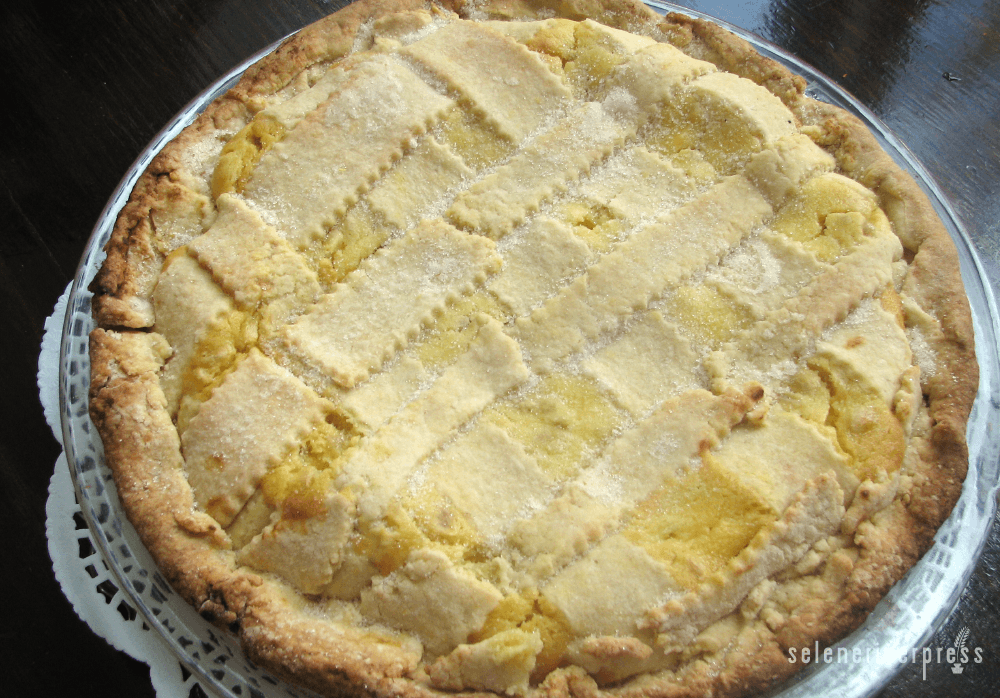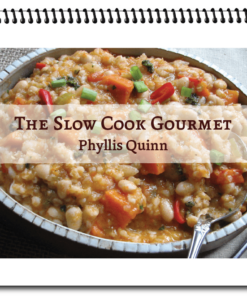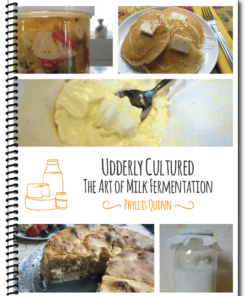All my life, every Easter my family—guided by three generations of matriarchs—would make a traditional specialty called Easter Wheat Pie (pastiera di Grano). One of the main ingredients is grano, Italian for wheat berries. You might have seen wheat berries in the bulk section at the health food store, but unless you grind or mill your own wheat into flour, you probably won’t recognize the grain. In Italy, grano is sold in its dried state or in cans (fully cooked) with the Easter Wheat Pie recipe printed ironically on the label.
Whole grains are the most minimally processed versions of any grain. All the edible parts—the bran, endosperm, and germ—remain intact, just the way the grain grows in the field. The majority of the grains we eat today are refined, a process that strips away many of the nutrients. Whole grains, in contrast, retain all their fiber, vitamins, and minerals. Nearly every supermarket today stocks even exotic varieties of grains that were once obscure, such as amaranth, farro, and wheat berries.
For best results, store your grains in tightly covered containers and refrigerate them during the warmer months. The following is a list of ancient grains that are readily available today, along with some of their uses. I’m providing the following glossary as my readers have been requesting recipes for farro and quinoa salads just in time for summertime dining.
Amaranth: This tiny grain native to Mexico is one of the few whole grains that contain all of the essential amino acids, making it an ideal source of protein. Choose amaranth for hot cereal on its own, add it to soup as a thickener, or use it instead of flour in pancakes and quick breads.
Buckwheat: Despite the name, buckwheat isn’t actually wheat—it’s the fruit seed of the rhubarb family. This is a quick-cooking, gluten-free source of fiber and magnesium. Americans have long used buckwheat for pancakes, but it’s also used globally in Japanese soba noodles and Russian porridge.
Bulgur: This mild-flavored grain cooks quickly because it’s already been boiled, dried, and cracked before it reaches your supermarket. Bulgur is perfect for salads or fast side dishes. You might also know it as tabbouleh, a famous and delicious Middle Eastern dish.
Farro: Also known as emmer wheat or pharaoh’s wheat, farro was the cornerstone of ancient Egyptian and Roman menus. Now it’s grown primarily in Italy and undergoing a resurgence as a gourmet grain. Try it in soups, or use it as a healthier alternative to arborio rice for risotto dishes.
Quinoa: Grown in the South American Andes since 3,000 BC, quinoa is a nutrient dense super grain. Like amaranth, quinoa is a complete protein. It cooks in about 15 minutes and is a great substitute for rice.
Black rice: The outer bran of this high-fiber grain contains the highest level of anthocyanin found in food, which accounts for the deep purple color when cooked. Black rice is good added to porridge and makes a great addition to homemade dark breads.
Wheat berries: These whole kernels of wheat are best soaked overnight since they take at least one hour to cook. Unprocessed, wheat berries are truly a whole grain, chewy with nuttiness for soups, salads, side dishes, and desserts.
Easter Wheat Pie
Chef’s tip: Soak wheat berries overnight in a generous amount of water to cover completely. Add water if necessary to keep completely submerged. Drain in the morning, then add fresh water and simmer (just under a boil) for about 1¼–1½ hours. Test for doneness. It should be chewy and nearly doubled in size.

Ingredients
- 1 (10–12 inch) homemade white whole wheat pie crust (click here for recipe), or 1 box phyllo dough, defrosted, plus ½ cup melted butter
- 1½ lbs. ricotta cheese, drained
- ½ cup honey or organic coconut sugar
- 5 eggs
- 1½ cups soaked, cooked wheat berries
- Dash cinnamon
- ½ teaspoon orange extract
- ¼ cup orange peel or citron, or soaked golden raisins (optional)
- 1 teaspoon vanilla
Instructions
- Preheat oven to 350°F. Butter a deep 10-inch pie plate. For pie dough: place your homemade pie dough in the plate, and cut excess off with a knife. Reserve the leftover strips for lattice-top crust. Set aside. For phyllo dough: butter 10-inch pie plate. Lay 3 sheets of phyllo down. Starting at an angle about 2 inches from the first set, overlap the next 3 sheets. Repeat with the remaining sheets of dough until all are used, forming points around the pie plate. Paint top layer of phyllo sheets with remaining butter to keep it from drying out. Set aside.

Cut leftover strips of dough and lay them lattice-style across the top of the filling. - In a large mixing bowl, add ricotta cheese, honey or coconut sugar, and eggs. Mix well.
- Add wheat berries, cinnamon, orange extract, orange peel or golden raisins, and vanilla. Mix to blend all ingredients.
- Gently add filling to pie crust or buttered phyllo dough. For pie crust: cut leftover strips of dough and lay them lattice-style across the top of the filling. Crimp the pie crust and strips together using a little water on your fingers if necessary. For phyllo: fold points of dough that hang off the edge of the pie plate over the filling.
- Bake at 350°F for 45 minutes. Turn off the heat and leave the pie in the oven to cool.
- Refrigerate at least one hour before serving.

AUTHOR’S NOTE
To choose your organically grown and fresh ingredients wisely, use the following criteria:
- chemical- and hormone-free meat
- wild-caught fish
- pasture-raised, organic eggs
- whole, unrefined grains
- virgin, unrefined, first-press organic oils
- whole-food, unrefined sweeteners
- pure, clean, spring water
- sea salt
- raw and/or cultured milk and cream products
Photos by Phyllis Quinn





What a great guide. Thank you, Phyllis!